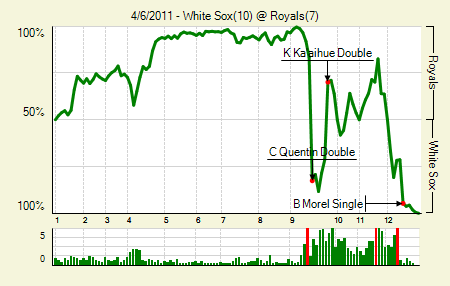One Night Only: Hot Game Previews for April 7th
Below, please find three games arranged in chronological order, voted Best Kind of Order once again in 2011.
(Note: Today’s ZiPS projections include FIP-, which is a much less complicated thing than you might initially suspect. Basically, 100 is league average, lower is better.)
Oakland at Toronto | 12:37pm ET
Starting Pitchers
Athletics: Trevor Cahill
194.2 IP, 5.50 K/9, 3.10 BB/9, 4.43 FIP, 108 FIP- (ZiPS)
Blue Jays: Ricky Romero
212.2 IP, 7.62 K/9, 3.68 BB/9, 3.84 FIP, 94 FIP- (ZiPS)
Notes
• In his first start of the season, Trevor Cahill had eight strikeouts in just 4.2 innings.
• He also used his curve — generally regarded as excellent — about twice as much as he did during his average start last season.
• “Those two things are totally related,” you’re maybe thinking.
• “They’re actually probably not,” Chris Cwik just told us.
• He also told us his surname’s pronounced “Swick,” though, so maybe he can’t be trusted.


